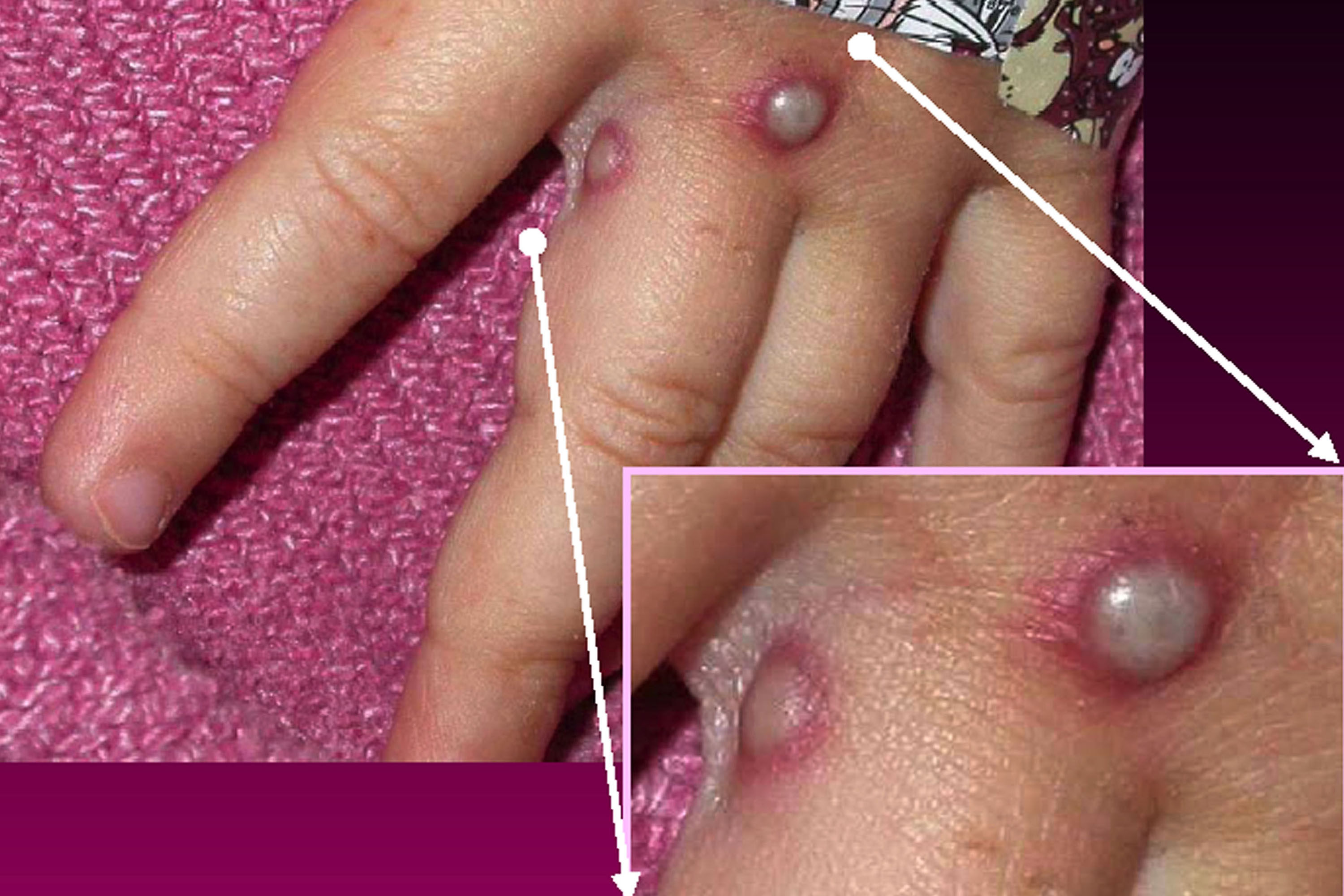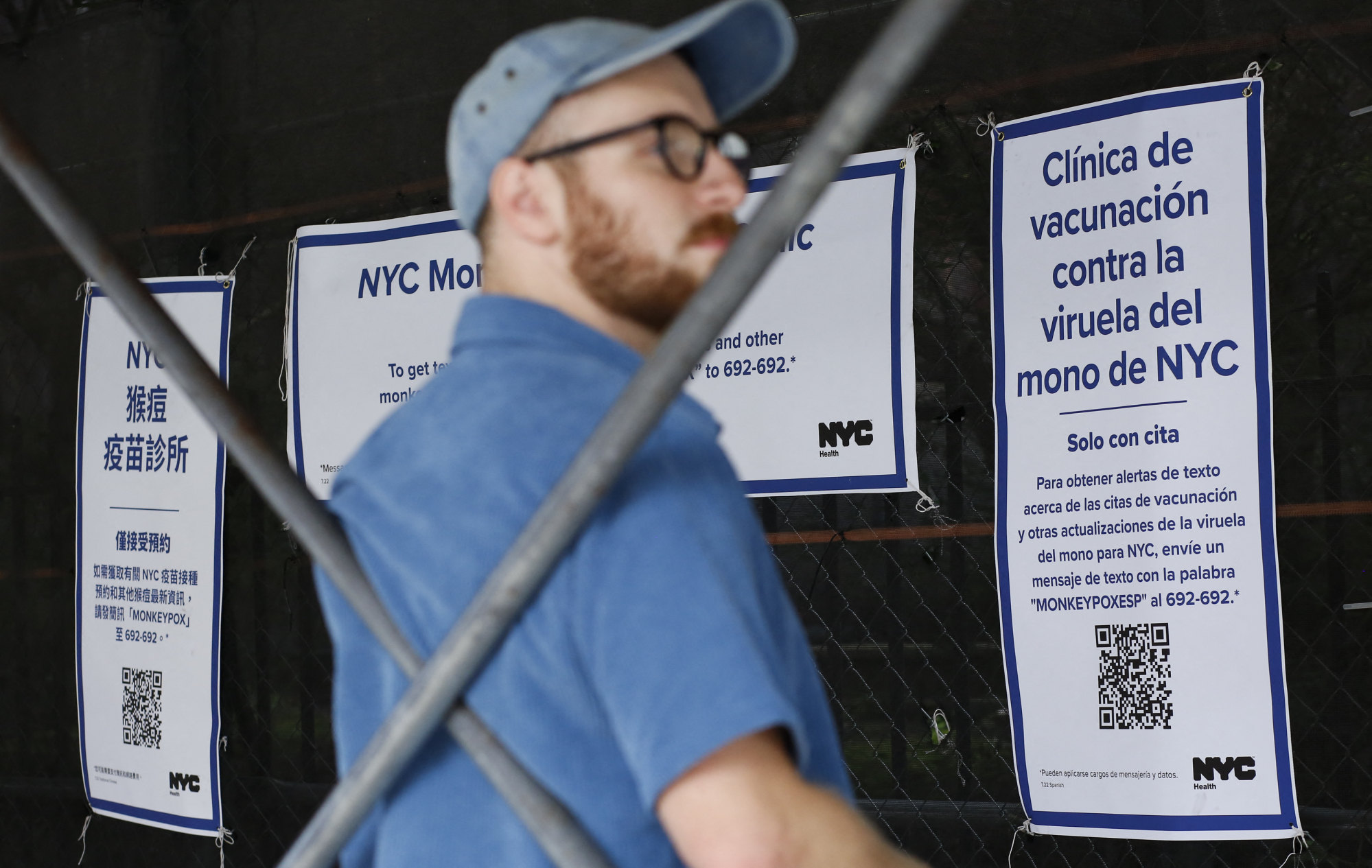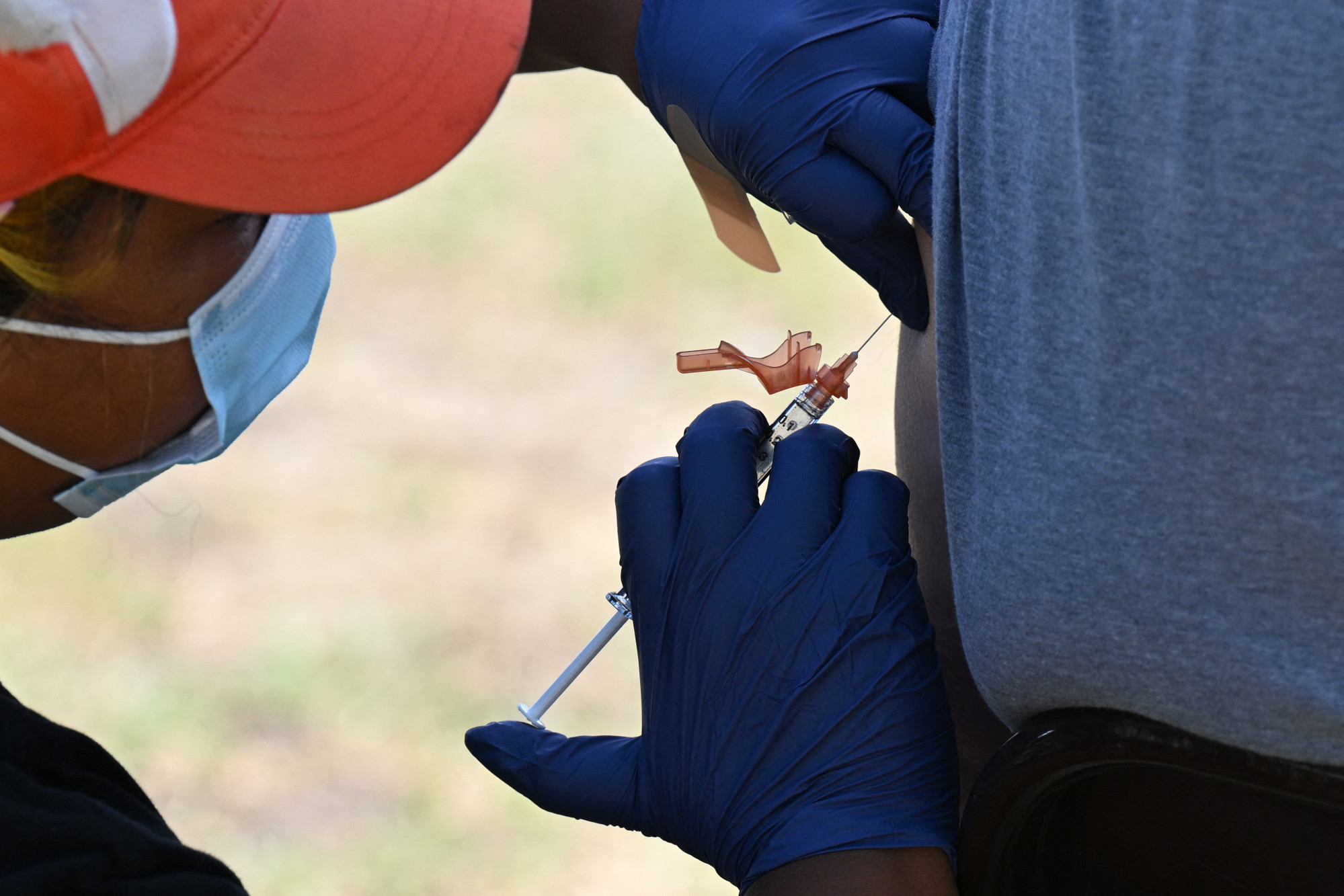
- Mpox is on the rise in China, but assumptions it is just spread through gay sex and an unwillingness to use foreign vaccines are hampering containment efforts
Hazmat suits, PCR tests, quarantines and contact tracing – it was hard not to feel a sense of déjà vu a few weeks ago when the Chinese Centre for Disease Control and Prevention published new guidelines on containing a disease outbreak.
But what was happening was not another Covid-19 wave. Rather, the Chinese government was addressing a potentially significant new public health concern: mpox.
The World Health Organization (WHO) reports that China is currently experiencing the world’s fastest increase in cases of mpox (formerly known as monkeypox), and the country needs to act quickly to contain the spread.
While the Americas and Europe have mostly contained the mpox outbreak that started in mid-2022, Asia has emerged as the disease’s new hotspot.

Japan, South Korea and Thailand, which all saw sporadic imported cases last year, have reported weekly new case numbers in the double digits in 2023, meaning the virus has been spreading in the domestic population.
But according to the latest data reported to the WHO, China has surpassed all other countries in the world, with 315 confirmed cases in the past three months – although irregular case reporting from Beijing makes it impossible to know the true scale of the disease at this point.
Hong Kong can expect more mpox cases after surge in mainland China: experts
Mpox is less contagious than Covid-19, but since 2022 more than 88,000 people have contracted the disease, which can be painful, and debilitating for some. More than 150 people have died.
Some countries have been more successful than others at containing domestic mpox outbreaks – and much of their success is arguably a result of proactive measures such as vaccination campaigns. But the Chinese government has barely started to take action.
“Compared with the response to Covid-19 […] the [Chinese] response is certainly dramatically different,” says Yanzhong Huang, a senior fellow for global health at the Council on Foreign Relations in the United States.
We need to understand more about the people that have been infectedDr Krutika Kuppalli, an infectious-disease doctor
“Even though [mpox] is less likely to develop into a large outbreak in the country, the Pollyanna attitude may encourage the spread of the disease among the at-risk population – unless they take a more active campaign against the disease.”
“Overall, compared to where we were last year, we’re definitely in a different place,” says Krutika Kuppalli, an infectious-disease doctor and chair of the Infectious Diseases Society of America’s Global Health Committee. “We have much fewer cases, but we are seeing sporadic outbreaks in different parts of the world.”

Indeed, by the time the WHO rescinded the PHEIC declaration, many Asian countries were already starting to see an uptick. Japan was the first Asian country to report a significant increase in mpox cases, in March.
In May, a report by researchers in the country warned that the disease could surge across Asia, owing to the connection between Japan and other Asian countries, and the low mpox vaccination rate in the region.
If the outbreak grows to the level it did in the West, the researchers noted, more than 10,000 cases might be expected in Japan alone before mpox is successfully contained.
It is less clear what exactly is happening in China. According to data collected by the WHO, China reported 315 new mpox cases from May to July. A case count this high suggests that not all cases were travel-related.
But – in another situation reminiscent of its Covid-19 response – China isn’t as forthcoming as other countries with its disease data; it doesn’t publish weekly reports of new cases. Rather, it has released a one-time report of the number of mpox cases recorded in June: 106.
‘No need to panic’ over Hong Kong’s spike in mpox cases, as vaccination centre opens
The Chinese government didn’t release data from May and, at the time of writing, hasn’t released any data about July cases.
The WHO, though, includes case counts from Taiwan, which has its own government and Centres for Disease Control, and Hong Kong in its China numbers. And there is no way for the public to separate the data. So the 315 number includes the 106 cases Beijing says it identified in June, plus the number of infections in Taiwan and Hong Kong over May, June and July.
This all further obscures the true number of mpox cases in mainland China – even though it is critical during an infectious-disease outbreak to be on top of things as soon as possible.
“We also need to understand more about the people that have been infected,” Kuppalli says, “such as […] the demographics, the clinical presentation, their immune status and about how they’ve been presenting to care. I think that type of information is important.”
The lack of clarity on how the disease has spread has caused some people in China to panic. The news that mpox cases have started to appear in the country has been circulating for weeks. But not until July 26 did China’s CDC and health ministry co-publish new guidance on how to prevent its spread, and even that left questions unanswered.

The directive asked that all confirmed mpox patients transfer to a medical facility for quarantine unless they have only mild symptoms.
It said contact tracing going back three weeks would be conducted for every patient, and their close contacts would be asked to self-quarantine for three weeks. It also recommended that local authorities monitor the mpox virus level in waste water in certain areas.
What makes monitoring the outbreak more difficult in China is that, as in the West, the current mpox spread has been seen mostly among communities of men who have sex with men (MSM).
And similar to what happened in the US and Europe, that association is consistently misinterpreted in China to suggest that mpox is only an STD spread by gay men through sexual activity – a particularly dangerous connection, as the LGBTQ community is increasingly targeted in the country.
Many Chinese social media users who have spotted men with skin lesions in public have been posting their photos to ask whether it is an mpox symptom. And the Chinese name for mpox – houdou – has also been thrown around casually as a slur against gay men.
From the individual cases that I have heard of, everyone who has a confirmed case is being asked to go to a quarantine facilityLGBTQ organiser Suihou, who asked to be identified by a pseudonym
To stop the spread of mpox, public health officials need to strike a delicate balance between destigmatising the disease by dispelling the idea that it affects only gay men and prioritising the MSM communities that are most vulnerable to it.
“Working with the people that are affected, helping to have non-stigmatising language and communication, has been hugely effective in helping to curb the outbreak” in the West, Kuppalli says.
So far, some LGBTQ communities in China feel they are on their own. M, who works for a queer rights organisation in Guangzhou and asked to be identified only by his first initial given the sensitivity of his work, points out that the CDC recommended waste-water monitoring specifically near venues that MSM communities frequent, including bars, clubs and saunas.
Anti-LGBTQ China mouthpieces and ‘Christian’ bigots don’t speak for Hong Kong
He says this has become controversial within the Chinese LGBTQ community, and that some organisers feel this puts a target on their backs.
Another LGBTQ organiser, Suihou, in Hubei province, who asked to be identified by a pseudonym, says that even though contact tracing information is supposed to be strictly confidential, he has seen one example in which an mpox patient’s private information, including phone number, national ID, address and HIV status, was leaked and passed around on social media.
Organisers such as M and Suihou are doing their own work to mobilise a disease response. To spread information about mpox prevention, M has recently sent text messages to 700 people and hosted in-person lectures that reached more than 900 people.
Suihou has worked with one mpox patient closely, helping him get testing and treatment. Not all the medical workers they have encountered have been trained on how to handle the sensitivity of these cases, he says; during the contact tracing process, the doctor told the patient that this disease is a problem for “your kind of people”.
Suihou warns that some people may avoid seeking medical help altogether, particularly given the lack of state support for mandatory quarantine and contact tracing.
“From the individual cases that I have heard of, everyone who has a confirmed case is being asked to go to a quarantine facility,” Suihou says. But, he explains, since the government has not provided a budget to help cover the quarantine, as it did with Covid-19, patients have no choice but to pay for the hospital stay and all medical tests out of their own pockets.

Many marginalised individuals, who are also more vulnerable in an infectious-disease outbreak, may not be able to afford that.
“With the slowdown of the [Chinese] economy, local governments don’t have the physical capacity or even the willingness to invest more in public health,” Huang says. Even the WHO doesn’t have funding specifically earmarked for mpox prevention; it has been using its emergency fund to cover mpox-related work.
A lot of the financial burden will again fall on local organisers. M says his organisation is using funds intended for HIV prevention to conduct mpox outreach work.
All of this could further discourage people who get infected from seeking medical tests and treatment. This in turn would make the community spread of mpox even harder to track – and could undermine prevention efforts.
As with Covid-19, vaccination is one of the best ways to get mpox under control. Worldwide, three vaccines are currently being used for mpox prevention: ACAM2000, MVA-BN (also known as JYNNEOS in the US) and LC16m8.
All these vaccines were originally designed for protection against smallpox but have been found effective against mpox.
Monkeypox to be renamed mpox by WHO
The US has administered more than 1.2 million MVA-BN and ACAM2000 shots. And in Asia, South Korea imported 10,000 MVA-BN shots last year and is planning to procure another 20,000 this year, while Taiwan, despite its small size, has procured and administered more than 72,000 MVA-BN shots so far.
Japan, meanwhile, has relied on a Japanese company to produce its own LC16m8 while also donating doses of the vaccine to countries including Colombia.
But none of these vaccines has been approved for use in China. The situation recalls China’s refusal to import any mRNA Covid-19 vaccines, instead relying on a few home-grown vaccines that were shown to be less effective.
In this case, though, the country doesn’t currently produce any of its own smallpox vaccines; production was terminated after smallpox was eradicated globally in 1980.
Bavarian Nordic, the Danish company that produces the MVA-BN vaccine, says it can’t disclose client information unless requested by the government and can’t confirm whether China has procured any MVA-BN shots. But it says the company is not in the process of applying to register the vaccine in China.
The WHO also has a sharing mechanism in place that allows member states to receive vaccines if needed. But it is unclear whether China has applied for mpox vaccines. The organisation did not immediately respond to an inquiry about whether there are plans to send vaccines to China.
I have some friends who have already travelled to Hong Kong or Macau to get vaccinated against mpoxM, LGBTQ organiser in China
The new Chinese CDC guidance on mpox made no mention of any vaccine as part of its outbreak response.
“It’s quite unlikely that China will focus on procuring vaccines at this moment, since there’s no precedent and [no] emergency approval of the vaccines. Rather, there seems to be a focus on surveillance, monitoring, quarantine, contact tracing, etc,” says Zoe Leung, a senior associate at Bridge Consulting, a Beijing-based communication consultancy specialising in public health.
It may not be this way forever: Sinopharm, a Chinese state-owned pharmaceutical company, announced in November 2022 that it had developed the world’s first mRNA vaccine against mpox, and it has been found to be effective in preclinical studies.
On July 13, Sinopharm officially applied for clinical trial approval for a “replication-defective mpox vaccine”, though it is unclear whether these are the same products.
Sinopharm did not immediately reply to questions about its mpox vaccine development.
“There is domestic research [into an mpox vaccine], but we don’t know when it can be commercially available. It will take a long time,” says M. “I have some friends who have already travelled to Hong Kong or Macau to get vaccinated against mpox.”

But for Chinese people to get vaccinations outside mainland China, there is often a high cost, a long wait and layers of bureaucracy to wade through. It’s again similar to trends seen earlier in the pandemic, when Chinese people with means travelled to Hong Kong to get mRNA Covid-19 vaccines.
“It doesn’t necessarily mean [Beijing is] not interested in vaccines,” says Huang, “but there’s this technology nationalism that discouraged them from rapid approval of the use of foreign vaccines.”
And that, he warns, “certainly contributed to the rapid increase in Covid-related mortalities”.

